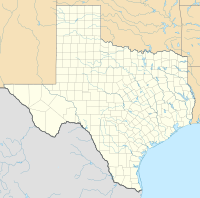Texas
Texas, nicknamed "The Lone Star State," is bordered by New Mexico, Oklahoma, Louisiana, Arkansas and Mexico. It was the 28th state to be admitted to the Union. While Austin is Texas’ capital, the city of Houston is the largest city in Texas. The southern state is the second most populous and the second largest state in the United States.
Texas has two members of the U.S. Senate, a total of 38 members of the U.S. House of Representatives, 31 members of the State Senate and 150 members of the House of Representatives.

Texas 2024 elections: U.S. Senate • U.S. House • State executive offices • State Senate • State House • Supreme court • Appellate courts • School boards • Municipal • Recalls • Candidate ballot access
Texas elections, 2025 Past elections: 2023 • 2022 • 2021 • 2020 • 2019 • 2018 • 2017 • 2016 • 2015 • 2014
Cities and counties in Texas
Ballotpedia provides comprehensive election coverage in the 100 largest U.S. cities by population and also covers mayoral, city council, and district attorney elections in every state capital. Additionally, Ballotpedia covers school board elections in the 200 largest U.S. school districts by enrollment.
- Arlington, Austin, Bexar County, Collin County, Corpus Christi, Dallas (County), Dallas (City), Denton County, El Paso (County), El Paso (City), Fort Bend County, Fort Worth, Garland, Harris County, Houston, Irving, Laredo, Lubbock (County), Lubbock (City), Nueces County, Plano, San Antonio, Tarrant County, Travis County, Webb County, Williamson County
Texas fact checks
Policy issues in Texas
Budget: Budget and finances • Taxes
Civil liberties: Affirmative action • Campaign finance • Nonprofit regulation
Education: Charter schools • Higher education • Public education • School choice
Election: Ballot access requirements • Redistricting • Voting
Energy: Energy information • Fracking
Environment: Environmental information • Endangered species
Finance: Financial regulation information
Healthcare: Healthcare information • Medicaid spending • Effect of the Affordable Care Act
Immigration: Immigration information
Pensions: Public pensions
Influencers in Texas
Influencers are power players who help get candidates elected, put through policy proposals, cause ideological changes, and affect popular perceptions. They can take many forms: politicians, lobbyists, advisors, donors, corporations, industry groups, labor unions, single-issue organizations, and nonprofits, to name a few.


